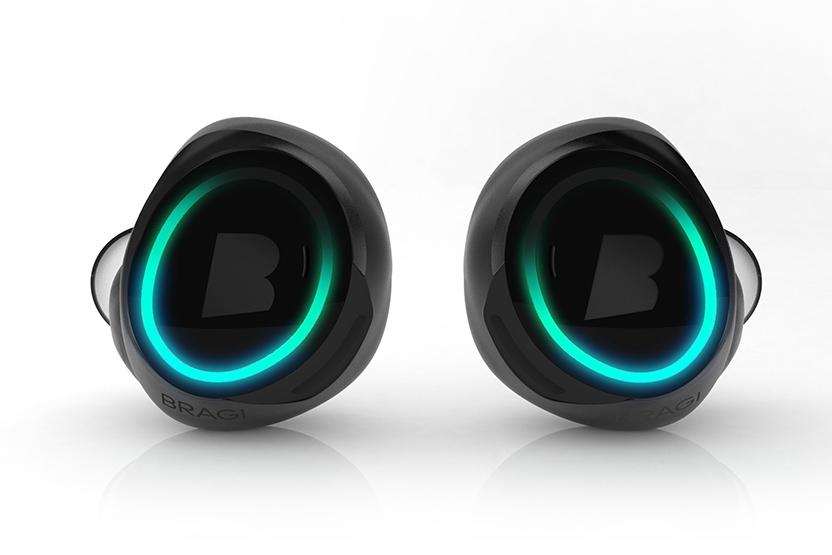By: Jordan Massey

The age of wired technology is fast approaching its long-awaited doom.
While you were still busy ogling over the burgeoning trend in wearable fitness technology, one talent-stacked european company has been developing the Swiss Army Knife of wearable tech. Some say it’s a pair of wireless headphones, others say it’s a fitness tracker. Surprisingly, the Dash is both! And there’s none of that fitness tracker wristband malarkey, this gadget really does do it all.
The Dash by Bragi was first submitted as a Kickstarter project, and it raised an astounding $3.3 million, well above the project’s stated goal of $260,000. The Dash itself is a pair of wireless earbuds that also has the ability to track fitness data. The full list of features is nothing short of impressive, provided the real thing lives up to the hype.
The Dash, aside from taking advantage of wireless tethering, also has an onboard 4GB MP3 player, so the user with an active lifestyle does not need to carry a companion smartphone. The device features both Noise Reduction and Audio Transparency, which enables the user to allow environmental noise to pass through the headphones. This carries the benefit of allowing a user to remain aware of changes in their immediate area. An embedded earbone microphone is advertised as allowing crisp and clear phone conversations. Sporting an innovative dual touchpad control interface, the user can give several different commands to the Dash by simply swiping the cover of their earpiece.
In the image below you can see what the Dash looks like in-ear. While significantly larger than other earbuds on the market, the Dash is contoured to the shape of the middle ear. This allows room for all the added features, including the battery, while marketed as also providing a secure fit for active users. The flat surface in the middle of the earbud is the touch control interface. Swiping vertically, horizontally, and tapping can give the Dash various commands on either ear.

Marketed towards users who lead an active lifestyle, the Dash can play music without a smartphone in your pocket. It features noise reduction, as well as Audio Transparency, which allows normal sounds to filter into the earbuds as well. You can answer your phone with it. You can use swipe gestures to give it commands. It’s sealed up tight, so you can even get it wet. And most importantly, it uses an array of sensors to track just about anything you do while wearing it.
These little earbuds have the ability to gather more data than many other wearable fitness technology products. Oxygen saturation, speed, cadence, pace, rotation, G-Force, turns, and even airtime are all available to the user. This allows the Dash to target users beyond that of just runners and bicyclists, but extreme sports enthusiasts as well.
The only music feature that Bragi doesn’t seem to boast about is the actual earbud quality. They claim that the tethering method they use allows for streaming of the full song band-width, which should go a long way for music quality. However, it would be interesting to hear some information about the quality of the actual earphones inside the device. It also seems as if Bragi has yet to realize the full potential of the sensor suite in the Dash. With their open support for third-party development and experimentation, one could assume that their main focus was designing and building the device. While this hopefully means a well-built product, it would be helpful to have more information about specific features, like the oxygen saturation meter.
The Dash is being released first to early backers who will also act as the developer beta program. In addition to it’s own companion app, Bragi is releasing an SDK allowing developers to play with all the data these earbuds can record. This means that the device will have third party app support, and hopefully an active user base willing to experiment with device potential. Bragi seems to embrace outside development, even going so far as to give potential developers some ideas:

This Swiss Army Knife of wearable technology appears nigh unbeatable in the features department, and has garnered a serious amount of excitement. With an expected release date of January 2014 and an asking price of $300, there are many who hope the Dash really does live up to the hype it has created.

Leave a Reply
You must be logged in to post a comment.